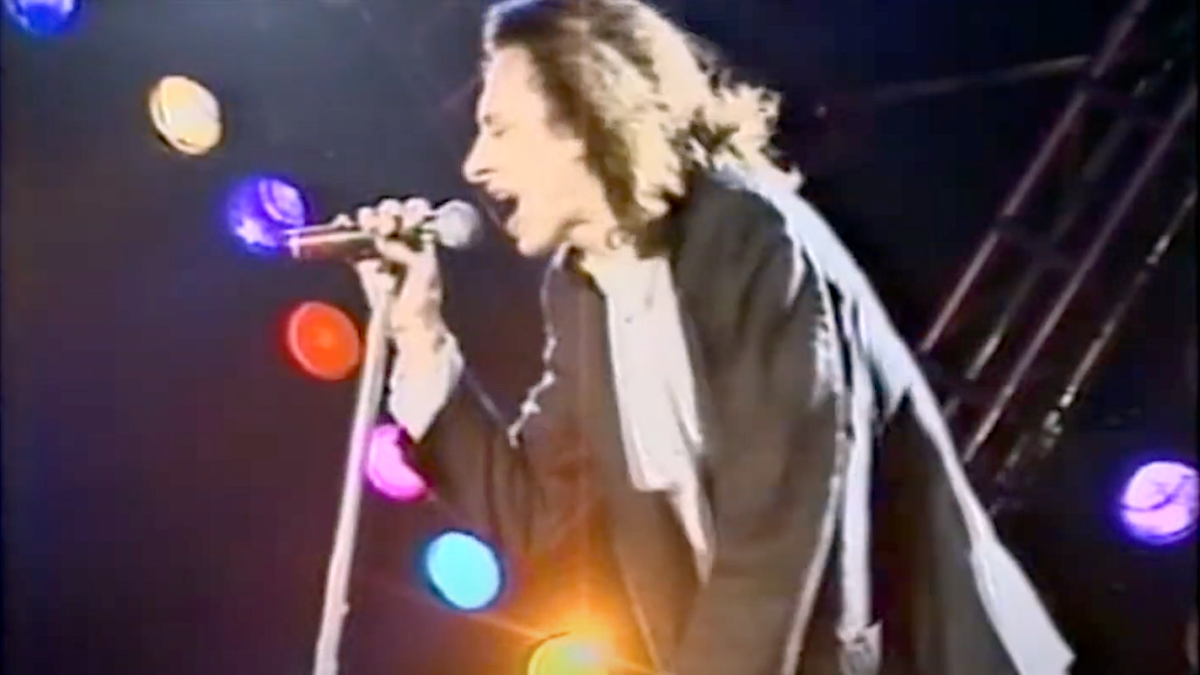Chagall Guevara is finally back. I missed them the first time around because I was too young to notice, let alone appreciate, their self-titled debut album in 1991. I only heard it at the end of the decade, years after the band broke up.
The group, formed by veterans of the Christian music industry who wanted freedom from the genre’s confines, was fronted by the provocative Christian singer Steve Taylor (as distinct from Aerosmith singer Steven Tyler). They signed with MCA, played some shows, put out an album, and ended up as no-hit wonders. But their one album was a masterpiece.
Almost every track was great, beginning with the apocalyptic anthem “Murder in the Big House” and concluding with “If It All Comes True,” a love song in defiance of apocalypse. The music had solid riffs stuffed with tasty fills. And the band, led by Taylor, knew how to turn, and sometimes steal, a phrase to craft lyrics that cleverly covered the range from grim to poignant to wry to absurdist. “I have seen the light by Braille” is funny, while “and every other week on visiting day I get tolerated by his new wife” is a gut-punch. This was alt-rock, arriving all grown-up, not into dull complacency, but into passion and wit informed by skill and wisdom.
It was magnificent, and it was largely ignored. Perhaps the label was the problem (the band seemed to think so). Perhaps a simpler, less pretentious name would have helped. Or a bigger budget for their one music video. Or maybe they needed a pretty-boy frontman with a smooth rock tenor, or some other musical changes. But at that point they wouldn’t have been the same band; too many changes in pursuit of success might have destroyed what made them great.
That greatness, even if generally unrecognized, created a loyal, if small, fanbase that still loves their songs (you can find the entire album uploaded to YouTube here). And there were enough fans that when the band (whose public face was a minimalist Facebook page) announced a Kickstarter to release new material, they quickly hit their goals. I nearly missed them this time around too. I happened to be looking up something about their music and saw that they had reunited during the pandemic. I was too late for the Kickstarter but bought the two new albums, which were released to the world at large this summer.
First New Album Is a Strong Warm-up
The first of these, a live album titled “The Last Amen,” is the warm-up act, aimed at fans who want all the material they can get. Recorded at a show in 1991, it features Chagall Guevara playing most of the material from their first album, along with a couple of other originals (“Tale O’ the Twister” and “Still Know Your Number by Heart”), with a pair of covers (“Workin’ for MCA” and “Gloria”) thrown in during the encore. The performances are strong with some interesting variations from the studio tracks; for example, the band compensated for the loss of the studio horn section from “Play God” by adding some extra funk to the guitar and bass parts. On the downside, Taylor’s voice flags as the show goes on. It’s worth it for existing fans of the band, but the place for new listeners to start is still their 1991 album.
Second New Album Is the Main Reward
The other release is a new studio album, titled “Halcyon Days.” This is the main reward for old fans of the band. It does not reach the pinnacle of their first album 30 years ago, but it is still very good, with some excellent songs. The new work holds up well on repeat — which I find to be the real test of quality.
Preferences will vary, but I found the top tier of the nine track album occupied by “Surrender,” “A Bullet’s Worth a Thousand Words,” and “Goldfingers.” The remaining songs all have their moments, and none of them are the sort of dud that gets skipped more often than not. The writing is still amusing, insightful, and moving — sample line: “you say surrender everything, can I keep the white flag?” The music still grooves too; for example, the intro to “A Bullet’s Worth a Thousand Words” is a great example of using a lick to set up a song.
As with their first album, the band drops an amusing change-up midway through the album. In this case, “Still Know Your Number by Heart” is a rollicking country tune from the perspective of a convict pining for his parole officer — “for your charms, I’d pee in any cup.” Despite this and other moments of levity, the album is a bit darker and more driven than the band’s 1991 debut, but not so much as to be a dramatic change in style. Finally, the closing cover of Mark Heard’s “Treasure of the Broken Land” is also excellent, but as a cover that was part of a tribute collection released after Heard’s early death, it is not as exciting as the new material.
Chagall Guevara can still write great songs, and they can still play — videos from a reunion concert show them nailing songs old and new. It might be too much to hope that they have another album in them, or that they will finally get their due 30 years late. But you never know. Their music has never been easier to listen to — just head over to Spotify, Amazon Music, the iTunes store, or wherever else you stream and buy music.
Seriously, check them out. I’m not cool enough for my favorite band to be the best band you’ve never heard.









